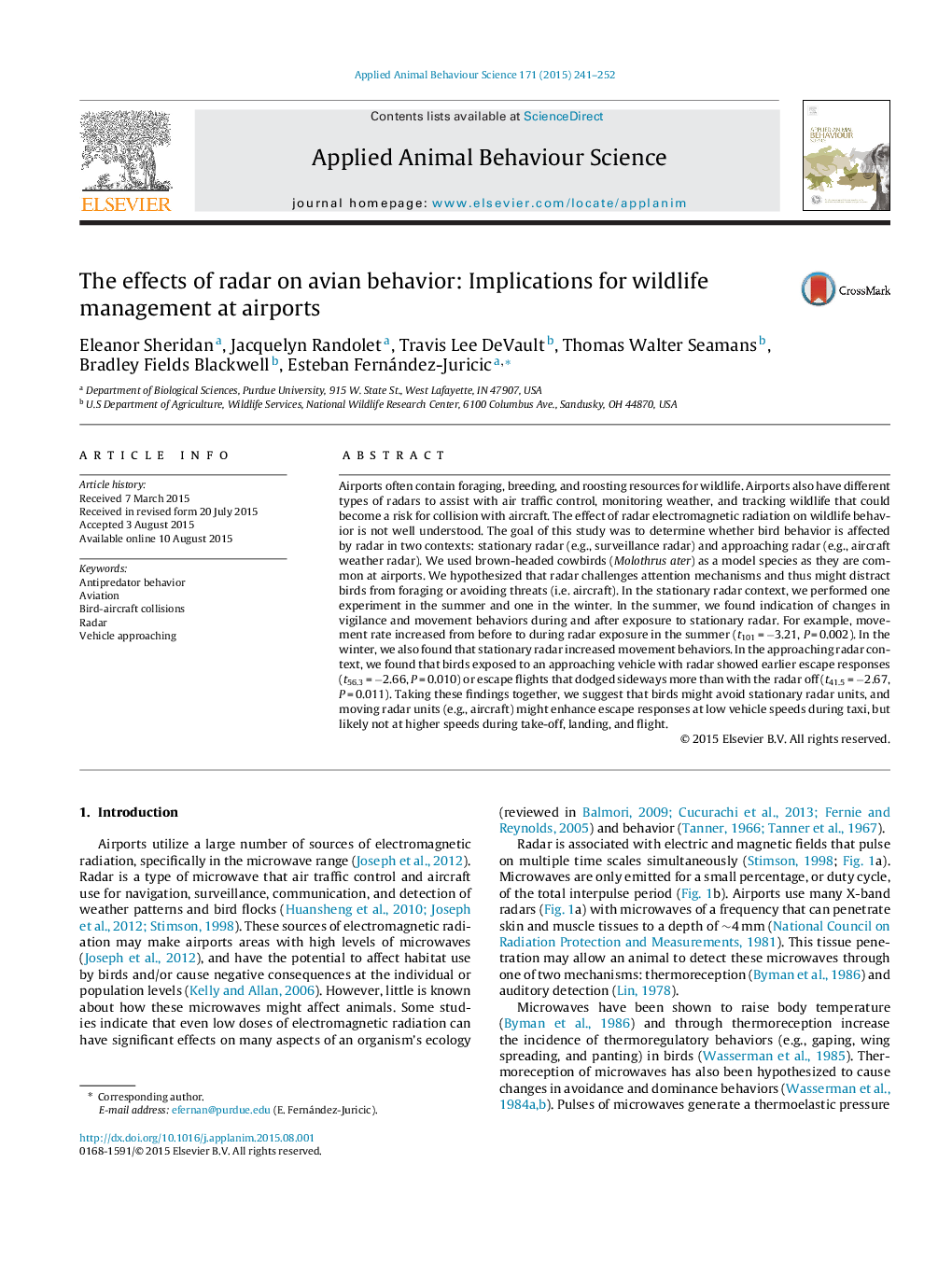| کد مقاله | کد نشریه | سال انتشار | مقاله انگلیسی | نسخه تمام متن |
|---|---|---|---|---|
| 6379516 | 1625335 | 2015 | 12 صفحه PDF | دانلود رایگان |
عنوان انگلیسی مقاله ISI
The effects of radar on avian behavior: Implications for wildlife management at airports
ترجمه فارسی عنوان
اثرات رادار در رفتار پرندگان: پیامدهای مدیریت حیات وحش در فرودگاه ها
دانلود مقاله + سفارش ترجمه
دانلود مقاله ISI انگلیسی
رایگان برای ایرانیان
کلمات کلیدی
رفتار ضد حریم شخصی، هواپیمایی، برخورد هواپیما با هواپیما، رادار نزدیک شدن خودرو،
موضوعات مرتبط
علوم زیستی و بیوفناوری
علوم کشاورزی و بیولوژیک
علوم دامی و جانورشناسی
چکیده انگلیسی
Airports often contain foraging, breeding, and roosting resources for wildlife. Airports also have different types of radars to assist with air traffic control, monitoring weather, and tracking wildlife that could become a risk for collision with aircraft. The effect of radar electromagnetic radiation on wildlife behavior is not well understood. The goal of this study was to determine whether bird behavior is affected by radar in two contexts: stationary radar (e.g., surveillance radar) and approaching radar (e.g., aircraft weather radar). We used brown-headed cowbirds (Molothrus ater) as a model species as they are common at airports. We hypothesized that radar challenges attention mechanisms and thus might distract birds from foraging or avoiding threats (i.e. aircraft). In the stationary radar context, we performed one experiment in the summer and one in the winter. In the summer, we found indication of changes in vigilance and movement behaviors during and after exposure to stationary radar. For example, movement rate increased from before to during radar exposure in the summer (t101Â =Â â3.21, PÂ =Â 0.002). In the winter, we also found that stationary radar increased movement behaviors. In the approaching radar context, we found that birds exposed to an approaching vehicle with radar showed earlier escape responses (t56.3Â =Â â2.66, PÂ =Â 0.010) or escape flights that dodged sideways more than with the radar off (t41.5Â =Â â2.67, PÂ =Â 0.011). Taking these findings together, we suggest that birds might avoid stationary radar units, and moving radar units (e.g., aircraft) might enhance escape responses at low vehicle speeds during taxi, but likely not at higher speeds during take-off, landing, and flight.
ناشر
Database: Elsevier - ScienceDirect (ساینس دایرکت)
Journal: Applied Animal Behaviour Science - Volume 171, October 2015, Pages 241-252
Journal: Applied Animal Behaviour Science - Volume 171, October 2015, Pages 241-252
نویسندگان
Eleanor Sheridan, Jacquelyn Randolet, Travis Lee DeVault, Thomas Walter Seamans, Bradley Fields Blackwell, Esteban Fernández-Juricic,
